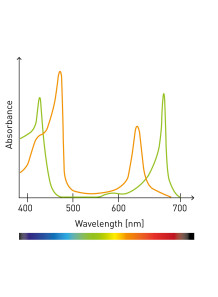UV-VIS Anti-alpha amylase assay
- Product Code: 31943
UV-VIS Anti-alpha amylase assay
| ขั้นตอน | ขั้นตอน | ผลลัพธ์ที่คาดหวัง | |||
|---|---|---|---|---|---|
| ไม่มีรายการที่จะแสดง | |||||
UV-VIS Anti-alpha amylase assay
UV-VIS Anti-alpha amylase assay
Measuring the inhibition of alpha-amylase activity using UV-Vis spectrophotometry is a valuable method for evaluating compounds or substances that may have anti-alpha-amylase properties. Alpha-amylase is an enzyme responsible for breaking down starch into simpler sugars. Here's a general protocol for conducting an anti-alpha-amylase assay using UV-Vis spectrophotometry:
Materials and Reagents:
Alpha-amylase enzyme
Substrate solution (starch solution)
Inhibitor substance or sample extract
Appropriate buffer solution (e.g., phosphate buffer, pH 6-7)
Iodine solution (1% iodine in 2% potassium iodide)
Deionized water
Positive control inhibitor (optional)
Pipettes and pipette tips
Test tubes or microcentrifuge tubes
Vortex mixer or shaker
Timer or stopwatch
Lint-free tissue for cuvette cleaning
Procedure:
Prepare a Blank Solution:
Use a UV-grade quartz cuvette and fill it with the buffer solution (without any inhibitor or alpha-amylase enzyme). This will serve as your blank reference for baseline correction.
Calibrate the Spectrophotometer:
Turn on the UV-Vis spectrophotometer and allow it to warm up.
Set the wavelength to the appropriate value for monitoring the enzymatic reaction. The exact wavelength may depend on the specific assay conditions, but it's typically around 620 nm for the iodine-starch complex.
Adjust the spectrophotometer's baseline using the blank solution, so that it reads zero absorbance at the chosen wavelength.
Prepare the Reaction Mixture:
In a test tube or microcentrifuge tube, mix the following components in the specified order:
A known volume of alpha-amylase enzyme solution
A known volume of substrate solution (e.g., starch solution)
A known volume of inhibitor substance or sample extract
Buffer solution to reach the desired total volume
Ensure that the enzyme and substrate concentrations are consistent between experiments.
Incubate the Reaction Mixture:
Incubate the reaction mixture at an appropriate temperature (typically around 37°C) for a specific amount of time. The incubation time may vary depending on the enzyme kinetics and the specific assay conditions.
Stop the Reaction:
To stop the reaction, heat the reaction mixture in a boiling water bath for a few minutes. This will denature the enzyme and prevent further starch digestion.
Prepare the Iodine Solution:
Dilute the iodine solution if necessary to reach a suitable concentration for staining. A 1% iodine solution in 2% potassium iodide is commonly used.
Stain the Reaction Products:
Add a small volume of the reaction mixture (usually 1 mL) to a test tube or microcentrifuge tube.
Add a few drops of the iodine solution to the reaction mixture. The mixture should turn blue-black due to the formation of the iodine-starch complex.
Measure Absorbance:
After staining, transfer the mixture to a quartz cuvette.
Wipe the cuvette with a lint-free tissue to remove any fingerprints or smudges.
Place the cuvette in the spectrophotometer and record the absorbance at the chosen wavelength (usually around 620 nm).
Calculate Alpha-Amylase Inhibition Percentage:
Compare the absorbance of the sample with the inhibitor to the control sample without the inhibitor (blank). Calculate the percentage inhibition using appropriate formulas.
| Mechanism | - |
| Appearance | - |
| Longevity | - |
| Strength | - |
| Storage | - |
| Shelf Life | - |
| Allergen(s) | - |
| Dosage (Range) | - |
| Recommended Dosage | - |
| Dosage (Per Day) | - |
| Recommended Dosage (Per Day) | - |
| Mix Method | - |
| Heat Resistance | - |
| Stable in pH range | - |
| Solubility | - |
| Product Types | - |
| INCI | - |
ตะกร้า
ไม่มีสินค้า



